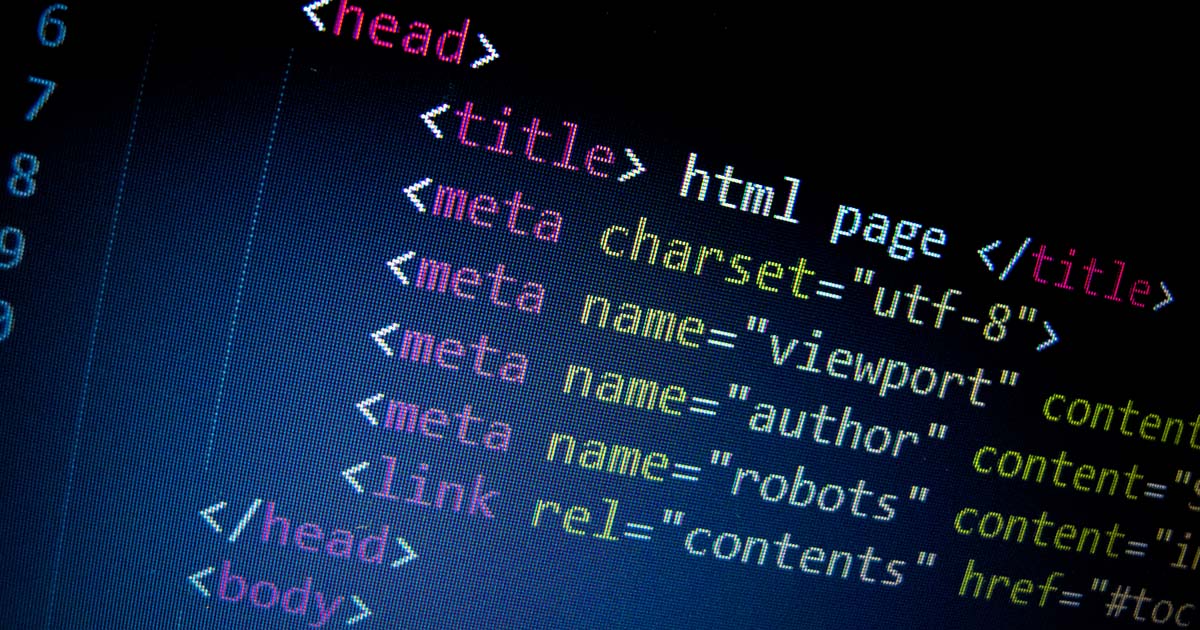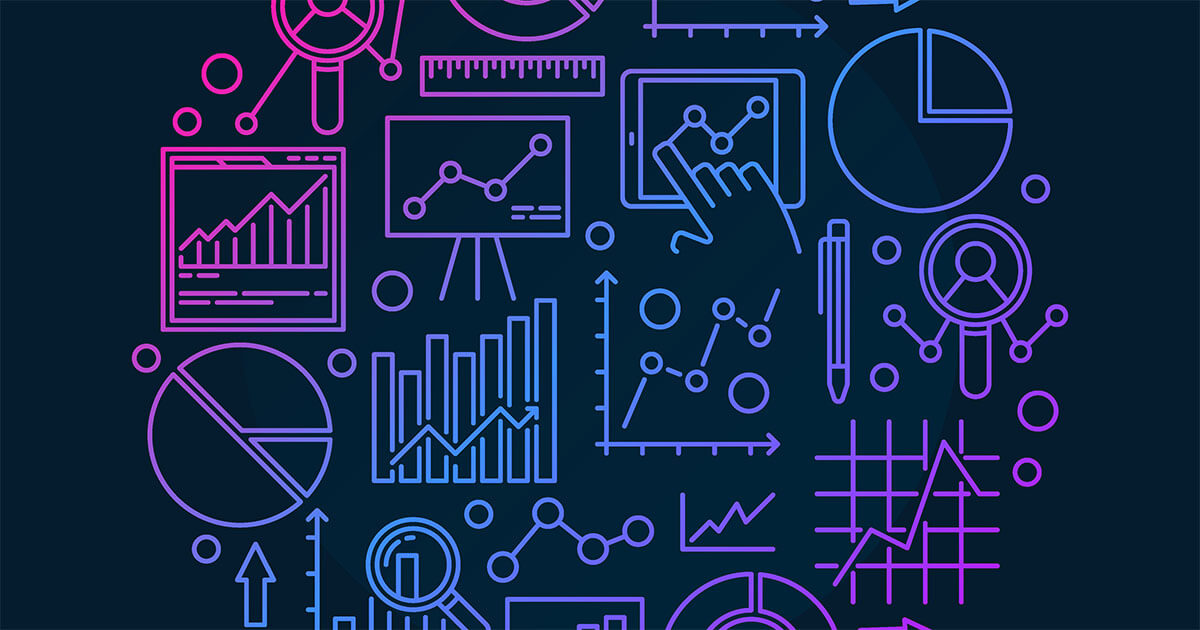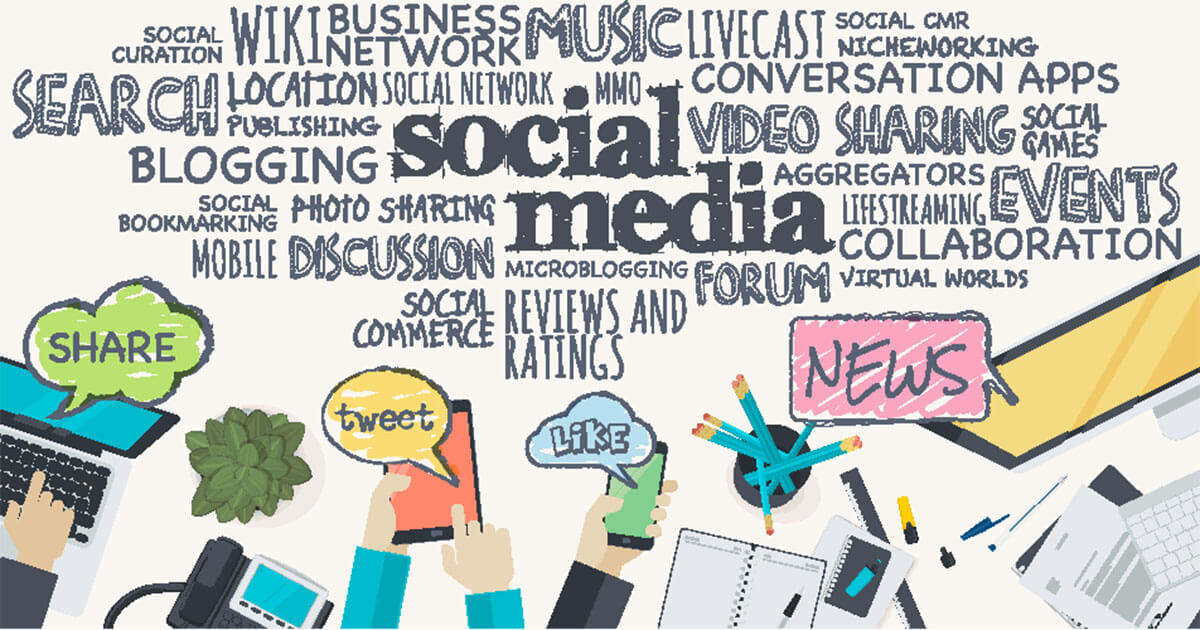Social bots – the technology behind fake news
What is a social bot? This term was used particularly frequently in connection with online discussions about Brexit as well as Donald Trump being elected as US president. Social bots are considered opinion robots that influence discussions in social networks. But is their influence really that great? What exactly is a social bot and how do they work?
Social bots simulate human users on social networks. If they do not indicate that they are machines then they are deemed fake accounts. Many users are misled, since they see believable information on a profile and assume that they are conversing with people. This type of bot is often used to spread opinions on social networks or to stimulate discussion in the interest of their operators.
Companies sometimes use social bots for marketing purposes – for example, to fake how popular certain products are in order to encourage more people to buy them. They also sometimes write positive product reviews that are fake. They can also serve political purposes, since they influence public discussions by representing the views of certain parties or politicians. To discredit a political opponent, social bots often spread information that isn’t true. It is therefore hardly surprising that this technology is often discussed in conjunction with emotive words such as 'fake news', 'hate speech', 'filter bubbles', or 'feedback loops'.
The polarizing effect of social bots affects journalists and media companies as well as humanities and social scientists. Furthermore, due to the increasing importance of social networks, a separate industry has now developed, which earns money by developing and using social bots. Using social bots is legal, making social bot technology on the internet a lucrative business.
Because more and more people are using social media to get informed, many predict that these robots’ influence on the public is growing. This article by Communications of the ACM on the rise of social bots explains the dangers.
However, you shouldn’t turn your nose up at the technology so quickly. After all, it can be used in a meaningful way without necessarily spreading false information or manipulating other people’s opinions – for example, as a chat program on company websites that answers customer questions.
To understand the dangers of social bots and how to recognize them, you need to know how bot technology works. This is followed by a brief outline of what a bot is and an explanation of the bot types that exist.
What is a bot?
A bot (shortened form of 'robot') is an automated program that is programmed for certain actions and executes them either regularly or reactively. The bot does this without needing human activation. It analyzes the environment and 'decides' which actions to take depending on the situation.
A 2016 study by Incapsula concluded that more than half of the world’s internet traffic is generated by bots. Nearly 30% of these bots were identified as bad bots (Source: "https://www.incapsula.com/blog/bot-traffic-report-2016.html").
The different types of bots sometimes differ greatly when it comes to their technical complexity. The spectrum ranges from simple algorithms to highly complex AI technology. If a bot works with artificial intelligence, it is even capable of learning: it explores its surroundings and adapts to them.
Depending on the function, a bot isn’t usually recognized by humans and performs its tasks unnoticed in the background, or appears as a human being (i.e. imitates human behavior). Some types of bots are described below in more detail:
- Web crawler: They belong to the category of bots that work completely unnoticed. Usually they are used by search engines to browse the web, analyze websites, and then enter this information into search directories. They usually act as 'innocent' within generally accepted standards (such as the Robots Exclusion Standard). Other web crawlers operate beyond these standards and collect unauthorized data on the net.
- Chat bots: In contrast to web crawlers, chat bots are reactive i.e. they react to human activities and specialize in responding to other chat participants in a meaningful way. In everyday life, chat bots are primarily encountered as digital assistants. For example, a website assistant can guide visitors through the website or answer questions about the website’s topic or what it offers. Language assistants such as Siri or OK Google or external language assistants such as Amazon Echo or Google Home are also based on this chat bot technology.
- Virtual computer players: Virtual computer games also require virtual actors who react flexibly to human beings. These operations are performed by bots. They are called non-player characters (role-playing games), aim bots (action games), poker bots (online poker) and so on. These bots are reactive and work increasingly with artificial intelligent technology. A good example is Google’s artificial intelligence, which is called AlphaZero. It excelled in Chess as well as the board game, Go. Intelligent technologies like these are also used in computer games – in the form of bots.
- Social bots: These are the bots that are used secretly in social networks. They are both repetitive and reactive: They like, comment, retweet, and try to provoke or involve others in conversations and discussions. They fake a human identity so that users react naturally to them.
Bots can make everyday life much easier for users, but they can also be used for criminal acts. Since many bots specialize in working independently and as inconspicuously as possible imitating human behavior, they are particularly suited to data espionage and data theft.
The web crawler and the chat bot are considered the two basic types of bot. Current bot types often combine their basic functions: the hidden data analysis from the web crawler and human communication simulation from the chat bot. Social bots also rely on these two basic functions.
What is a social bot and what makes it different from other bots?
A social bot is an automatic program that simulates human behavior on social networks. Social bots take part in discussions on Twitter or Facebook and act like human users. They spread content on a particular topic on social media – mostly for the purpose of influencing people’s opinions.
Social bots are usually used for marketing or political purposes. It is not uncommon for social bots to spread fake news. To sway public opinion, a social bot uses techniques that are typical of bots and are also used by other bot types. They search social networks for discussions on pre-defined topics (data evaluation just like web crawlers) and influences them as a virtual conversation participant (simulation of conversations like with a chat bot).
In terms of their function, social bots are very similar to chat bots or digital assistants – they are used to communicate with people. But there is one crucial difference: while chat bots are usually like a consulting service, which helps the dialog partner, social bots are supposed to deceive and manipulate. And while chat bots can fulfill their function even if they are perceived as technical programs, deceiving other net participants is essential for social bots to influence public opinion.
Examples of when social bots are used
There are many examples of the manipulative use of social bots. In 2016 and 2017 alone, the use of social bots was registered in almost all major public elections. In particular, there were extensive discussions about social bots with regard to their influence on the Brexit vote, the presidential elections in the US, as well as the parliamentary elections in France and Germany.
- Brexit vote: In June 2016, the majority of British citizens decided to leave the EU. Prior to this, there were heated discussions on social networks – and it was noted that many social bots were also involved. The Independent reported that social bots played an important strategic role, especially when it came to voting 'leave'.
- US presidential election: In November 2016, Donald Trump was elected the 58th President of the United States. There was a lot of information on how much influence social bots had on his narrow election victory. According to Oxford University, automated pro-Trump bots overwhelmed pro-Clinton messages. Apparently every third pro-Trump tweet was from a bot. There was also a fake news report that the Pope had recommended Trump for election and this was shared almost a million times – including by social bots. But the use of pro-Clinton social bots was also registered.
- German parliamentary elections: In light of what happened the previous year in the UK, many people were worried that social bots might influence the federal elections in 2017. As a result, all participating parties spoke out against their use in the election campaign, even though social bots are not illegal in Germany. Luckily there wasn’t much meddling on the part of social media bots. Due to the relatively small number of Twitter users in Germany, however, their reach was also smaller, which is why fewer bots are used in Germany anyway.
The influence of social bots on the outcome of the elections was controversially discussed. In particular, the Brexit vote and the surprising election of Trump was written about for months in the press. Many people suspected that social bots were used as secret voting assistants before these elections took place. The effects of social bots and fake news are obvious: they lead to a great loss of trust in digital communication.
Another side effect of social bots is that they falsify the results of social media analyses. When analyzing likes and retweets, it’s difficult for analysts to determine whether they originate from human or virtual accounts. The actual relevance of topics is therefore more difficult to determine. This is a disadvantage for both companies and politicians because they both like to base their strategies on the results of social media analyses.
How social bots work
A social bot usually posts using a fake account – with its own profile photo, posts, and a good amount of followers or 'friends'. The social bot uses this account to distribute its marketing messages or political statements. This can be done via likes and retweets or in the form of posts or comments. Using a programming interface (API), a social bot can access social networks and receive and send data.
Social bots usually operate at times when other users are more active. In addition, they usually post at varying intervals to give the idea of being human when in fact a machine is behind all the posts.
A social bot can also send friend requests. If a request is confirmed by a human user, the social bot can then collect and analyze the data of the user. As early on as 2011, a Canadian study showed that social bots are able to collect data and analyze the account information from users that have accepted their friend request.
Twitter is one of the most popular networks for social bots because of the length of the tweets. Bots’ poor language skills are harder to recognize in short tweets.
Many social bots are programmed with simple algorithms based on simple 'if…then…' statements: If a relevant topic has been identified, then the social bots will post the pre-programmed content. To find relevant topics, social bots work with simple keyword searches and scan Twitter timelines or Facebook posts for specific wording and hashtags. Then they publish pre-written texts as statements or try to steer conversations in a certain direction.
However, there are also social bots that are technically much more complex. With the help of artificial intelligence, comprehensive data analysis, and text analysis, these intelligent social bots succeed in constantly generating new comments that differ from the previous ones. Sometimes these bots can even refer to the current day’s events. They usually assemble their posts from different online texts, which they simple rearrange. These more complex social bots are more difficult to expose.
However, robots do not really work efficiently until they are connected with each other: If many bots co-ordinate with each other in a so-called botnet, they distribute information even more effectively. For example, social bots can then like and share posts written by other social bots. The more accounts there are, the more their influence grows.
Technology: why are there so many social bots?
To develop a simple social bot, you don’t need any special technical skills: You can create your own social bots without any prior programming knowledge, as long as you use the right tools. It is just as easy to access fake user accounts, since they can be easily recreated using generators available online – or the operator can simply buy existing fake accounts. Even the control software for these accounts can now be purchased online. Via a programming interface, the bot is then given access to Twitter or Facebook, where it reacts to pre-defined hashtags or keywords. The technology is easily available, which contributes significantly to the rapid spread of social bots.
However, distribution is also made easier by social media itself, since Facebook and Twitter deliberately keep their programming interfaces relatively easy to access to encourage application developers to continue working on new software for their platforms. But this also means that social bots have no trouble taking advantage of this. Twitter is especially easy to access, which is why most of the bots can be found there.
In September 2016, a study from Rice University estimated that around 23% of all Twitter accounts are bots. This is out of a global active user base of approx. 330 million. (Source: "https://motherboard.vice.com/en_us/article/bj7vam/why-twitter-is-the-best-social-media-platform-for-disinformation")
But there are also measures that can be put in place to limit what social bots can do. This way, technical barriers can be created that prevent or at least make it more difficult to create fake accounts. Once you have determined the IP address of a bot, you can block it so that it doesn’t gain access to the network.
Many platforms use captchas to ward off social bots. Captchas are short tests that people can usually pass without problems, but many bots have difficulties with them. With a captcha, the user usually has to type in a graphically altered sequence of digits, which cannot be read by a machine. The more complex a bot is programmed, the higher the probability that it will be able to solve simple captchas.
The different types of social bots
A social bot’s basic functions are always the same, but can be filtered into three categories depending on their functions: the overloader, the trendsetter, and the auto troll.
- The overloader: This is a bot that literally floods an online conversation with its comments. It posts the same statements over and over again, causing other posts to get pushed out of sight. The overloader is only really effective if it works with other bots. When a botnet overloads a post with likes and comments, human users quickly lose control of the discussion. This makes it then impossible to exchange content this way.
- The trendsetter: Trendsetters also work best in teams: If a large number of social bots seize a hashtag together, they can easily spread posts relating to the topic of the hashtag. If the topic ends up trending on Twitter or Facebook, it might be picked up by the press. This way, the trendsetter bot distorts the actual relevance of the chosen topic area: They ensure that marginal phenomena act like groundbreaking trends, or small groups like large social movements.
- The auto troll: The auto troll operates alone. It tries to distract users who express themselves on a certain topic and tries to involve them in a conversation. It usually does this with contradictory statements, which causes the user to retaliate. This distracts the user from the original conversation, and the new conversation becomes polemic and heated. With this method, bots can easily prevent users from exchanging content.
Who benefits from social bots?
It is difficult to determine who is actually behind a social bot. So far, there is no method that can accurately identify fake accounts. Therefore, it’s even harder to track down the responsible operator. However, there are roughly four groups that can benefit from using social bots:
- Social marketer/influencer: Smaller and larger companies can use social bots for covert marketing. As an influencer, you want to use these bots to start trends and influence them. Target group information can also be obtained via a social bot, because if you confirm a bot’s friend request, they will have comprehensive access to the data stored in your profile.
- Political figures: Lobby groups or political figures are also suspected of using social bots. For example, American secret services suspect that Russian hackers were behind many fake accounts and social bots during the US campaign. Whether the attack came from criminals or the Russian government, however, is unclear.
- People interested in public opinion-forming: There are users that want to influence the opinion of others via social bots. These can be individuals, groups, organizations, or criminals. The third group – a collection of people that are hard to identify – is probably the largest of the groups mentioned here. Those involved use bots to benefit a party or to raise awareness of certain issues – or simply to cause trouble. Spreading left-wing or right-wing extremist content is quite often the goal. Since this group is so heterogeneous, it’s not so easy to name one specific intention.
- Those with no recognizable interests: There are a number of similarly 'harmless' social bots, which, for example, leave a crazy amount of likes on Star Wars comments. Bots of this kind do not serve any recognizable political or economic purpose. Presumably, those behind the bots just like to troll others.
The dangers and effectiveness of social bots
In most cases, the purpose of social bots is to influence opinions and trends on social networks.
“The easiest way to manipulate social networks is where social bots produce pure volume without generating new content, which at first may seem a relatively harmless form of manipulation, but its consequences are not insignificant. Added to this is the fact that social networks are controlled by algorithms that give preference to popular content. Accounts that have a large following receive more favorable treatment from the social network and thus reach more genuine users.” (Source: "https://www.rabbitconsultinggroup.com/single-post/2017/02/06/The-impact-of-social-bots-on-elections")
However, there is discussion about how well social bots carry out their tasks. After all, many experts agree that social bots are not doing their job very well and therefore have little influence on social media users. An article from UX Magazine explains why bots are overrated since they only have limited response ranges and provide rigid answers, which gives them away.
There is a consensus that the work of social bots needs to be researched more thoroughly. It can therefore be assumed that social research will provide more precise findings in coming years. For preventative reasons, a more detailed investigation of the technique would make sense: While many bots are currently still easy to unmask, it doesn’t mean technically-advanced bots are. This would increase the potential of bots. It is therefore necessary to develop solution strategies at an early stage to be able to react to technical advancements.
Social bots primarily have opinions that are the opposite to those held by the general public. Their operators use them to form opinions and use techniques that prevent ideas from being exchanged. However, the extent to which bots can actually influence public opinion has not yet been sufficiently researched – there is a lack of scientific evidence of how effective they really are.
How to recognize a social bot
Identifying a social bot has become a lot more difficult as their complexity has increased. However, there are a number of questions that you can ask yourself when working with social media accounts in order to access whether you are dealing with a human or not:
- How likely is it that a person would create this profile? You can get clues from the profile picture, the age of the account, or the ratio of followers to how many accounts they’re following. This is because bots usually follow a lot of accounts without having many followers themselves. If an account has only two or three friends, the probability that it’s a bot is quite high. Does the profile picture look like a unique snapshot or like picture of a professional model that the bot could have found anywhere online? How coherent the profile text is can also indicate whether you are dealing with a human user or not. You should also check when the account was created. Many bots are developed shortly before being used and therefore have quite recent accounts.
- What is the account posting? If the account keeps posting similar posts – with links to the same media or practically identical words – it is obviously a bot that is trying to start a conversation on a certain topic. Unnatural language or usual grammar errors also suggests it’s the work of a bot. Bots generally post more than they comment.
- How often does the account post and how often does it like other posts? Further conclusions can be drawn from the frequency with which an account is active on social networks. An exceptionally large number of posts, likes, and retweets are just as noticeable as a constant number of posts per day. You should also observe the account’s reaction time: if the account responds and posts merely seconds later, this is a clear indication that a human isn’t behind the account.
- How does the account respond to contextual questions? One of the most reliable methods of identifying a bot is to ask contextual questions. These are questions that have to be answered differently depending on the situation. Social bots have a hard time thinking spatially. If a bot is asked: “What does the profile picture of the user above you look like?”, it will have difficulty answering this contextual question.
A detailed checklist gives you tips on how to recognize social bots.
Last but not least, it always makes sense to remember how different social bots work. If you encounter an 'overloader' or 'auto troll' and witness their disturbing behavior, don’t let yourself be provoked by it. Even if the account isn’t being run by a bot, it helps to ignore it and to discuss the user constructively with other users. This way, the influence of social bots AND human troublemakers is decreased.









